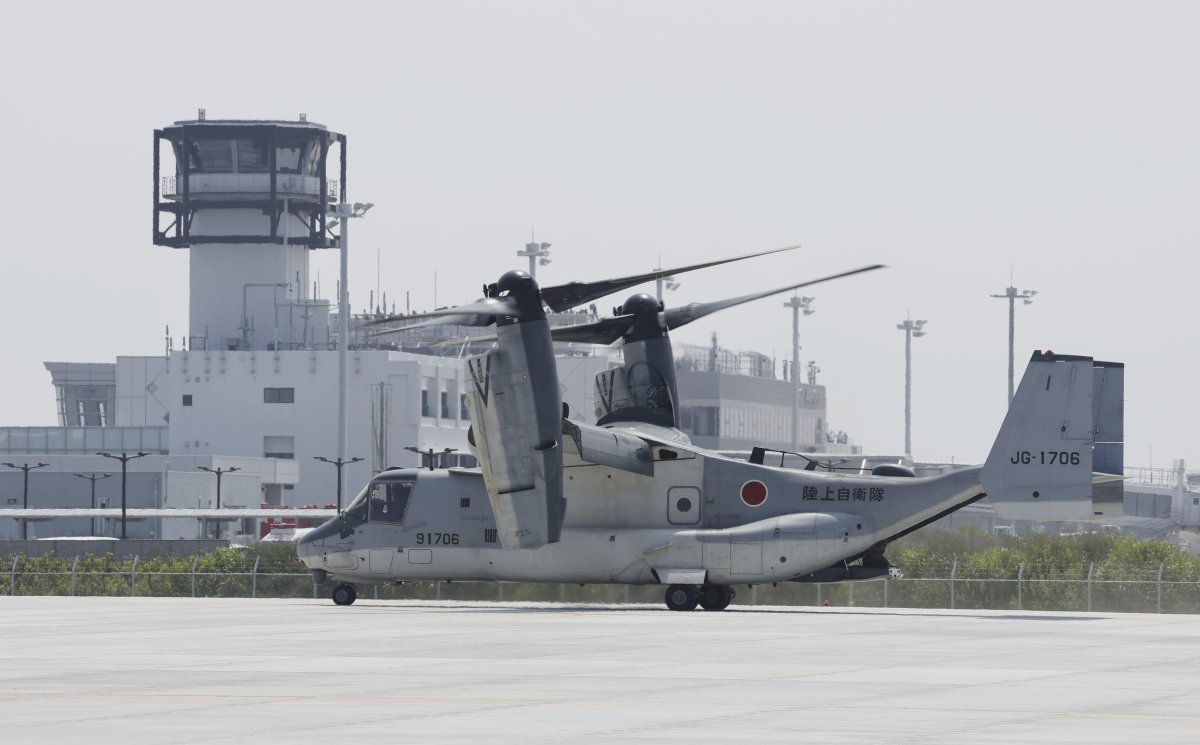Login to Continue Learning
Japan, a key U.S. ally in the Indo-Pacific, has completed the deployment of its U.S.-made Osprey aircraft fleet, enhancing the defense of its outlying islands near China.
Under the U.S. island chain strategy, Japan forms part of the First Island Chain with Taiwan and the Philippines, aiming to restrict China’s military activities within its immediate waters in case of conflict.
Japan views China as its greatest strategic challenge. Beijing has vowed to take Taiwan by force if necessary and claims the Senkaku Islands in the East China Sea, administered by Japan.
The acquisition of the Osprey, a tilt-rotor aircraft capable of flying like a fixed-wing plane while taking off and landing like a helicopter, is part of Japan’s effort to boost its defensive capabilities. Its southwestern islands have limited airfields, making such acquisitions particularly valuable.

Map Shows New V-22 Osprey Fleet on China’s Doorstep
Japan, a key U.S. ally in the Indo-Pacific, has completed deploying its Osprey aircraft fleet. This move strengthens Japan’s defenses near islands close to China.
Newsweek contacted the Chinese Foreign Ministry for comment but received no response via email.
**Why It Matters**
Under the U.S. island chain strategy, Japan forms part of the First Island Chain along with Taiwan and the Philippines. These nations aim to restrict China’s military activities in its immediate waters during a potential conflict.
Japan views China as its greatest strategic challenge. Beijing has vowed to take Taiwan by force if necessary and claims the Senkaku Islands in the East China Sea, which are administered by Japan.
The acquisition of Osprey tilt-rotor aircraft is part of Japan’s efforts to boost its defensive capabilities, particularly in its southwestern islands where airfields are limited.
**What To Know**
Japan’s Defense Ministry announced that 17 V-22 Ospreys have completed relocation from a temporary base at Camp Kisarazu near Tokyo to their permanent base at Camp Saga in Saga Prefecture.
According to Newsweek’s map, Camp Kisarazu is on Japan’s largest island, Honshu. Camp Saga, which opened on July 9, is on Kyushu, the southernmost main island, facing both the East China Sea and the southwestern islands.
The Osprey has a flight range of up to 860 nautical miles, making it capable of reaching all of Japan’s southwestern islands as well as parts of China’s coast, Taiwan, and the Korean Peninsula from Camp Saga.
Tokyo described the deployment at Camp Saga as “of great significance” in strengthening island defense. The aircraft will be integrated with the Amphibious Rapid Deployment Brigade.
The Osprey is manufactured by a partnership between Bell and Boeing, with Japan being its only foreign operator since 2007. However, a series of crashes involving the Osprey has raised safety concerns in Japan.
**What People Are Saying**
Japan’s Defense Ministry stated: “Strengthening island defense capabilities, including in the southwest region, is an urgent issue for Japan’s defense given the increasingly severe security environment surrounding Japan.”
Boeing notes on its website about the V-22 Osprey: “With rotors vertical, it can take off, land and hover like a helicopter; once airborne, it converts to a turboprop capable of high-speed, high-altitude flight. This combination offers unique global reach capabilities.”
**What Happens Next**
Japan will likely continue to enhance its defense posture in the southwestern islands amid China’s growing military presence in the region.



















